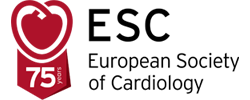20 May 2014, Paris, France: EuroPCR 2014 delegates will get a preview of the latest 2014 European Society of Cardiology (ESC) and the European Association for Cardio-Thoracic Surgery (EACTS) guidelines on myocardial revascularisation on Wednesday, 21 May at 10.30 am.
The new guidelines update the first edition from 2010. The taskforce is chaired by Prof Stephan Windecker, President-elect, European Association for Percutaneous Cardiovascular Interventions (EAPCI), and Prof Philippe Kolh, representing EACTS, who was also co-chair of the previous task force.
The latest update continues to emphasise the importance of the Heart Team approach in treating patients with advanced coronary artery disease (CAD). It also underscores the benefit of coronary artery bypass grafting (CABG) in patients with advanced multivessel coronary artery disease (Syntax Score [SS] >22). Similarly, the new guidelines recommend CABG in diabetic patients with advanced multivessel disease.
Conversely, percutaneous coronary intervention (PCI) is recognised as an alternative in patients with proximal left anterior descending artery disease, simple left main lesions and simple three vessel CAD (SS<22). The guidelines also discuss the role of myocardial revascularisation in patients with concomitant valvular heart disease, which has gained importance with the recent advent of transcatheter aortic valve implantation (TAVI) techniques. They also emphasise the volume-outcome relationship for both CABG and PCI procedures and recommend minimal number of procedures to be performed. Many recommendations regarding antithrombotic treatment are also updated in this latest practice guideline document.
Professor Windecker, Department of Cardiology, Swiss Cardiovascular Center, Bern, Switzerland,said:
“The guidelines published in 2010 were the first joint document from the ESC and EACTS. Since then, new evidence in the field of myocardial revascularisation has been accumulated justifying an update. Notably, the final five-year results of the SYNTAX trial that compared PCI with CABG in patients with multivessel disease have been published. Moreover, there are also results from the large scale FREEDOM trial comparing PCI and CABG in diabetic patients with multivessel disease that have recently become available. There is also additional evidence comparing PCI and CABG in patients with left main disease. Finally, the adjunct antithrombotic therapy of patients undergoing revascularisation has witnessed important additions of evidence. For all these reasons, an update is timely and needed for the community.”
Heart Team approach encouraged
Windecker and Kolh stated that the guidelines attempt to provide clinicians with a summary of the current evidence in the field.
“They provide guidance on the best evidence-based therapy. However, the guidelines also recognise that evidence-based medicine only provides data on patients included into studies and that many patients may not fit into the inclusion criteria of certain trials. An important aspect to emphasise is the physician-patient relationship and the Heart Team approach, whereby it is possible to identify treatment pathways best suited to an individual patient,” clinicians noted.
“I would emphasise the importance of these being joint guidelines, so you don’t have surgical and interventional communities recommending different approaches. In the Heart Team approach, the patient with complex coronary disease or co-morbidities should be discussed by two or three physicians including a cardiologist, interventional cardiologist and a cardiac surgeon, and this came from the SYNTAX trial,” said Kolh, University Hospital of Liège, Cardiovascular Surgery Department, Liège, Belgium.

 Our mission: To reduce the burden of cardiovascular disease.
Our mission: To reduce the burden of cardiovascular disease.